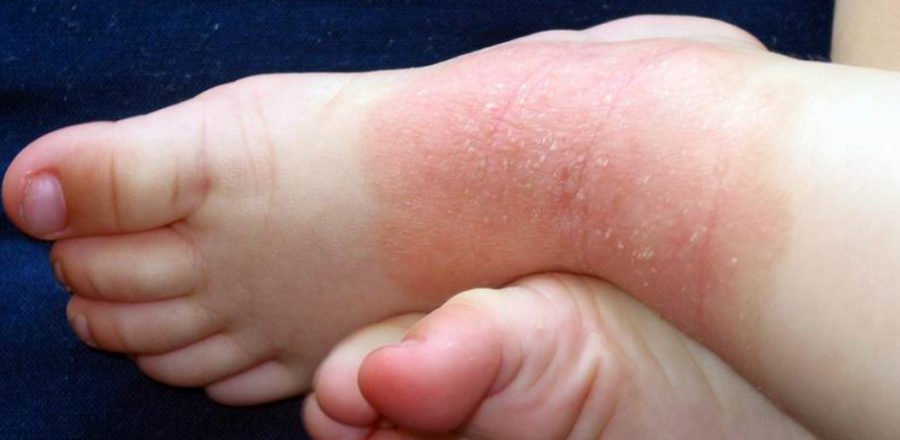Vaccines, Aluminum and the ALLERGY connection

Researchers at the University of Virginia Health System’s Division of Asthma, Allergy & Immunology report that an era of food allergies that began with the post-millennial generation might be a response to vaccines containing the adjuvant alum, a known trigger for allergic traits. Alum is usually the name given to potassium aluminum sulfate when used in vaccines, the FDA states. Sometimes, aluminum hydroxide and even other forms of aluminum adjuvants are also referred to as alum in allergy research.
In their article published in Journal of Allergy and Clinical Immunology, the UVA team described their rationale for measuring the allergy responses of a patient — who had already demonstrated some food allergies to cow’s milk and peanuts — in relation to the administration of vaccines that contained alum.
“The era of food allergy began with the post-millennial generation, the same faction who received new immunizations during early childhood. Many of these vaccines contain alum, an adjuvant known to induce allergic phenotypes.”
The team measured the baby girl’s IgE (IU/mL) and IgG4 (mcg/mL) by ImmunoCAP. IgE, or Immunoglobulin E, are antibodies that are produced by the immune system in association with allergic responses, according to the American Academy of Allergy, Asthma and Immunology, which states that people with allergies have immune systems that overreact to allergens by producing the IgE antibodies.
IgG4 is one subclass of IgG, the most common form of antibody proteins in our bodies. IgG antibodies make up three-fourths of the antibodies in our blood at any time, but IgG4 is one of the least common of the IgG antibodies, accounting for a mere four percent of IgG in blood serum. They have a very unique structure, according to the medical journal, Current Opinion in Rheumatology, which explains that their biological role is still uncertain. It’s believed that IgG4 antibodies are driven, at least in part, by signaling molecules that regulate immunity, inflammation, and the process of creating new blood cells.
The UVA researchers said that between the ages of 8- and 12-months, the baby’s total IgE had decreased in response to both peanut and cow’s milk by the time her one-year vaccinations were due, though the total IgE was still high enough that most people would show at least some allergy symptoms. At 12-months-old, the little girl got those one-year vaccinations. Three weeks later, her IgE antibodies sharply increased, almost doubling from 44.1 to 75.6. Her peanut antibodies increased from 11.2 to 16.5, and her milk antibodies increased from 2 to 5.06. Interestingly, in Allergy And Asthma Proceedings, a statistically significant association was declared between IgE antibody levels and the severity of eczema in atopic individuals.
After this response, alum-containing vaccines were avoided. Four months after her 12-month vaccines, her total IgE decreased to 51, which was still higher than before her one-year vaccines were given. The baby had completely avoided peanuts, but her peanut-related antibodies continued to rise while all other IgE values decreased. The baby began cow’s milk oral desensitization about a month after turning one-year-old. Though her IgE antibodies related to cow’s milk didn’t increase, her IgG4 antibodies to the cow’s milk were “remarkably higher” after the desensitization therapy.
The research team concluded that alum-containing vaccines increased IgE, and stated that this is something that they had already observed in their earlier research. The milk desensitation therapy somehow increased the milk-related IgG4, which they had also seen reported after peanut immunotherapy.
Interestingly, another article, this one published in the Journal of Allergy and Clinical Immunology, reported that in order to study food allergies, specific genetically susceptible wild-mice were actually given egg white protein (ovalbumin) allergies by administering the protein at the same time as the adjuvant alum. Another article in the Korean Journal of Internal Medicine claimed that the “most simple and effective method of inducing an asthmatic reaction in a short period of time in mice” is to inject them with the both the egg white protein and the adjuvant alum two times, with the two injections spaced one week apart.
Literature from the University of Auckland explains that some vaccines contain tiny amounts of aluminum salts, like alum, in order improve the immune response to those vaccines. That literature says that we are born with some aluminum in our bodies already and add to our stores “through eating, drinking, receiving some vaccines and taking some medicines.” Only a very small amount of aluminum ever enters our blood stream through digestion, according to that literature. When we eat aluminum, most of it comes out through our feces. That literature says that when aluminum enters our blood stream, it is mostly removed by our kidneys, but that a tiny amount can stay in our bodies and “is mainly stored in our bones, with some stored in our lungs and brain.” The University of Auckland literature says that more aluminum gets absorbed by our bloodstream from vaccines than by ingestion, but that the amount is very small, and it is mostly processed and removed.
In the Journal of Immunotoxicology, researchers from the Department of Pharmaceutical Sciences at Northeastern University said that aluminum adjuvants in vaccines carry a risk of inducing these undesired, allergic responses, especially in people who are genetically predisposed to these types of responses from vaccines and to atopic diseases. These researchers wrote that they have found some genetic variants that might make people more susceptible to allergies being induced by aluminum adjuvants in vaccines, and pointed out that determining who may have these gene variants before vaccination could reduce the incidences of these unfortunate responses to vaccines.
“Identification of these individuals may decrease the risk of adverse events associated with the use of aluminum-containing vaccines.”
According to the CDC, alum is found in a handful of vaccines at the same time that potential allergens are.
In Comvax, a vaccine used to protect against Hib and hepatitis B, both soy and yeast are potential allergens that are injected at the same time as alum during vaccination.
In the hepatitis B vaccine Recombivax, yeast protein and soy are also found in the same injection as alum. According to the World Allergy Organization Journal, vaccines approved for human use in the U.S. that contain aluminum adjuvants include some Hib conjugate vaccines, DTaP vaccines, all combination DTaP, Tdap, and Hib vaccines, hepatitis B vaccines, hepatitis A vaccines, HPV vaccines, anthrax vaccines and rabies vaccines.
The UVA research team involved in compiling the article that linked food allergies with alum found in certain vaccines consisted of highly-respected allergy and immunology specialists, including Dr. Scott P. Commins, who worked as as Associate Professor of Medicine and Pediatrics at UVA and is now an Associate Professor of Medicine at the University of North Carolina Allergy & Immunology Clinic, Dr. Alice E. W. Hoyt of UVA Allergy and Immunology, Alexander J. Schuyler of UVA, asthma and allergy specialist Dr. Peter W. Heymann, who leads UVA’s Heymann laboratory which is part of the Division of Pediatric Respiratory Medicine at the university, and Dr. Thomas A.E. Platts-Mills, who is a Professor of Medicine and Microbiology at UVA who completed his residency at Johns Hopkins University.
The UVA team presented their findings in March this year at the American Academy of Allergy, Asthma and Immunology’s annual meeting in Los Angeles. Currently, a team at UVA is working on a new study looking for increases in food allergies after the hepatitis B, DTaP, Hib, PCV 13, and hepatitis A vaccines, all of which the study’s researchers say contain alum.






